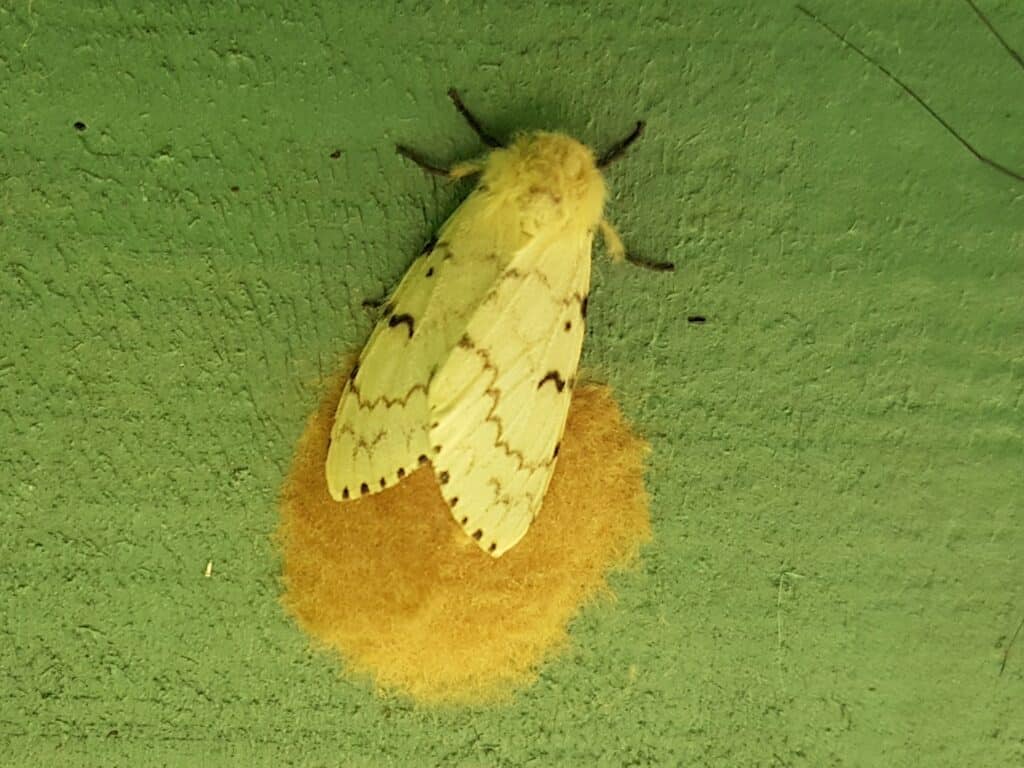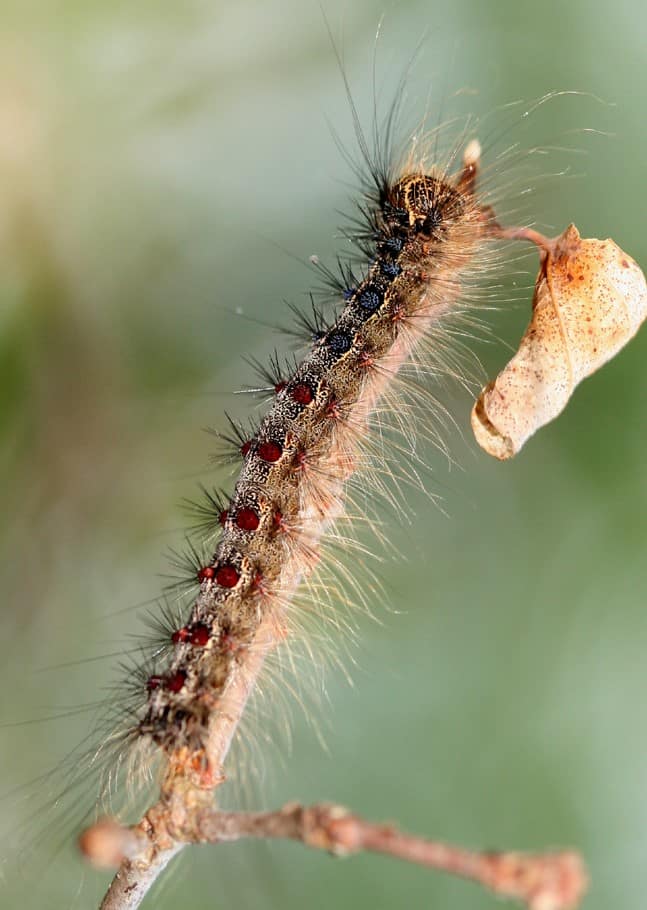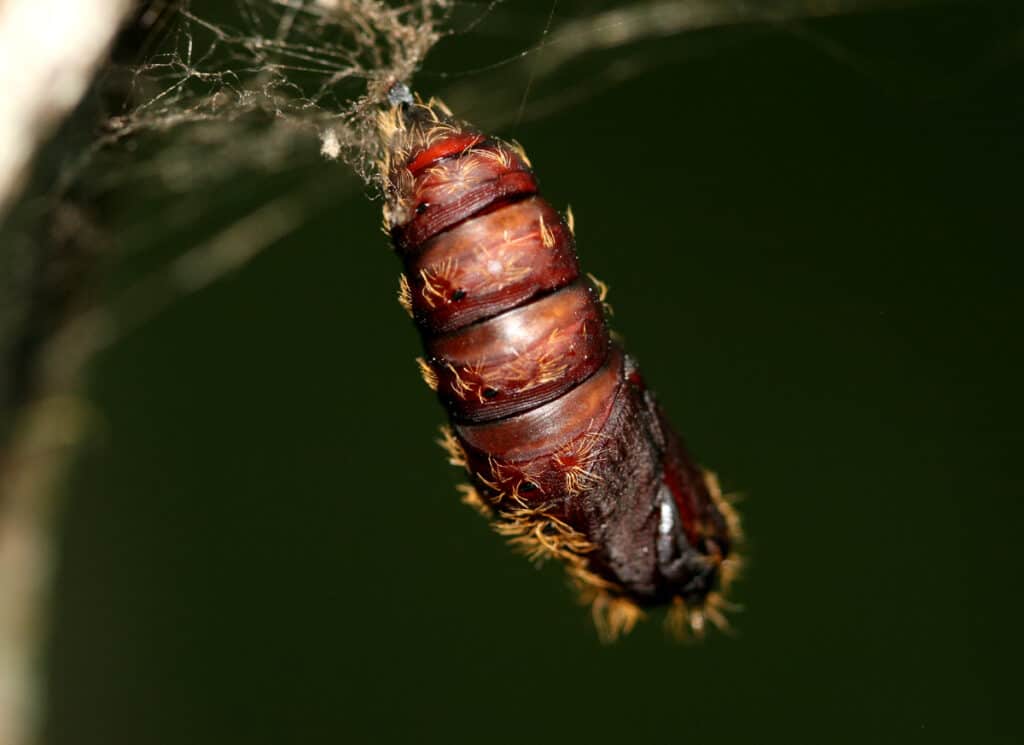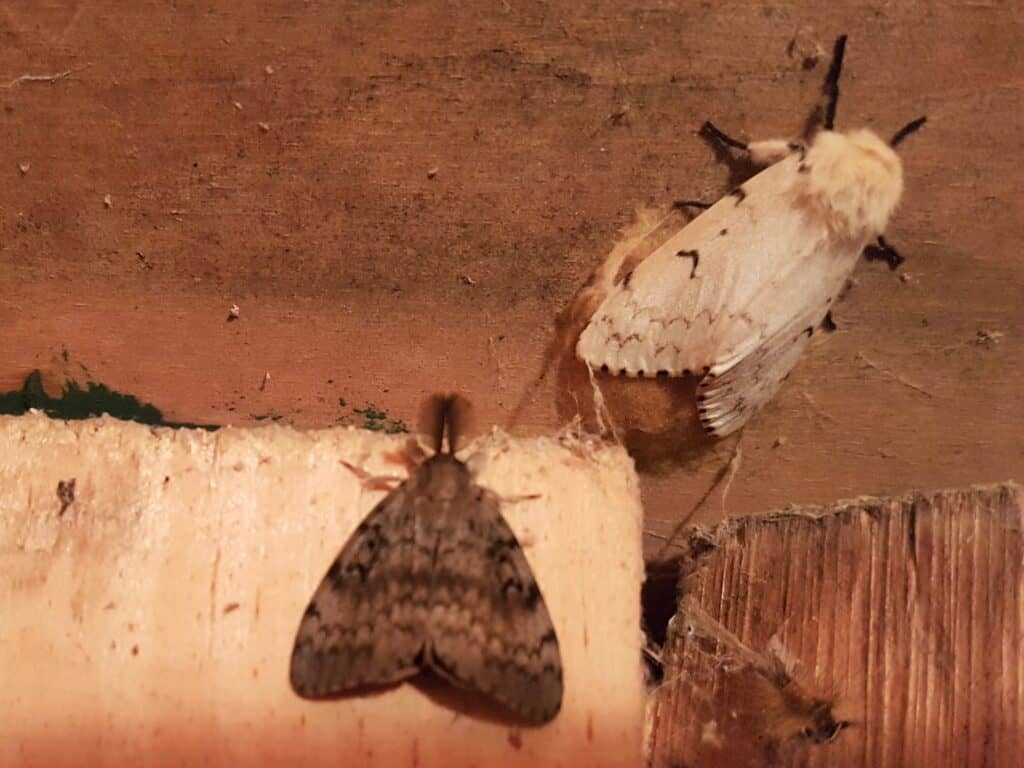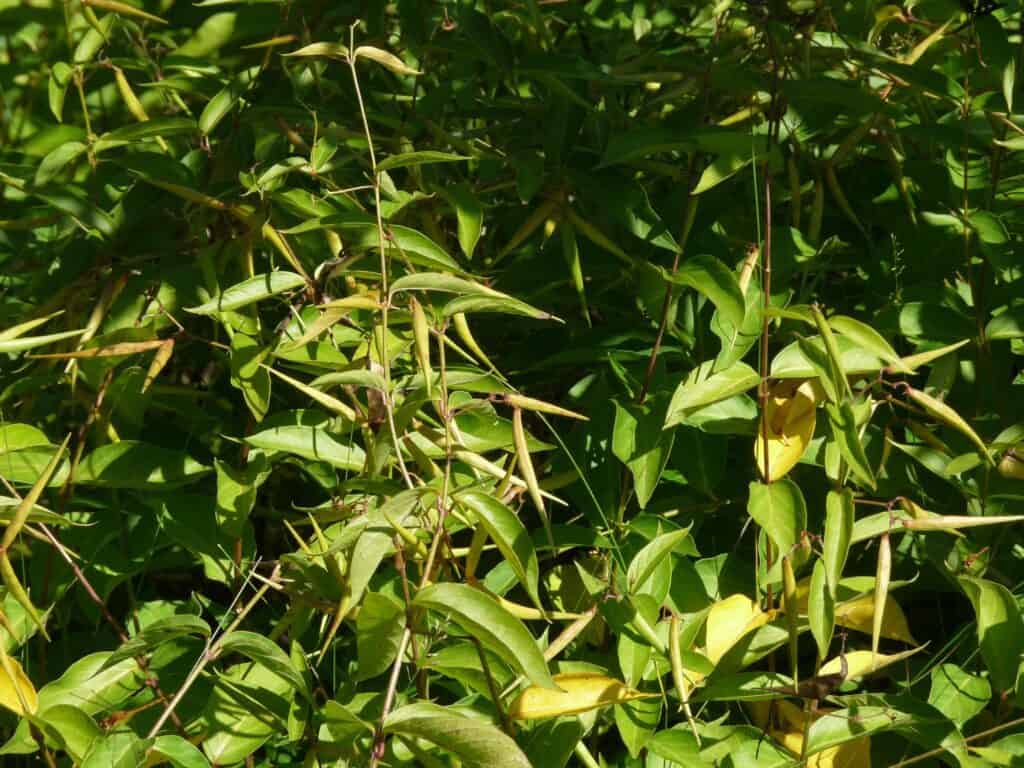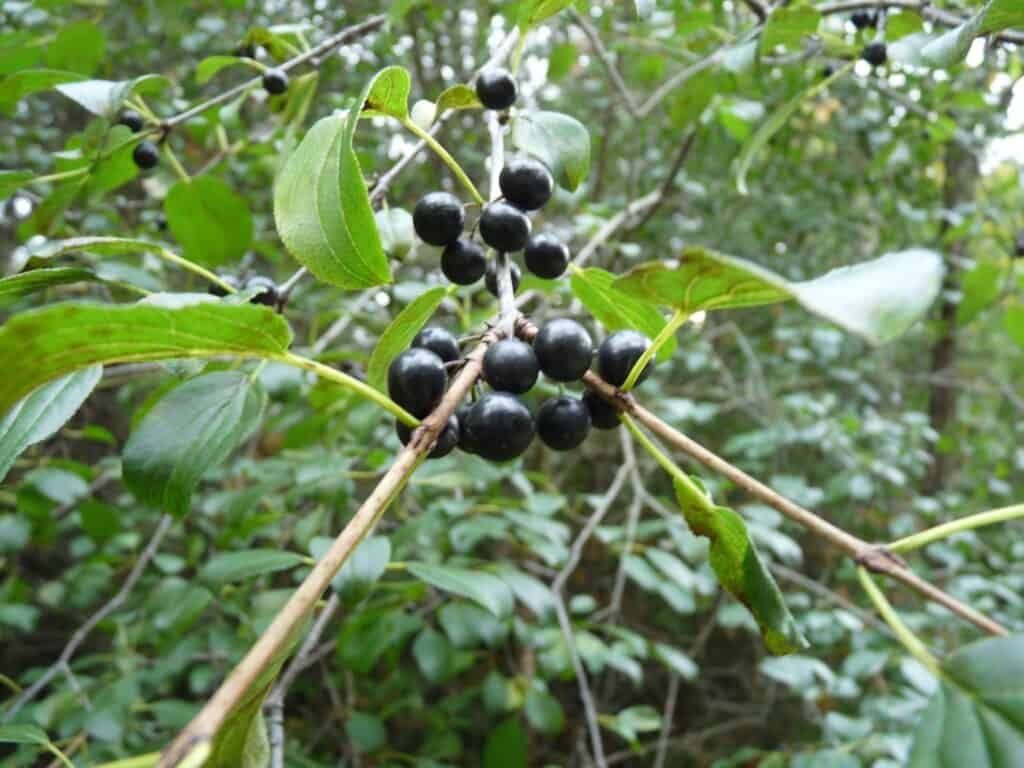Many areas of the Kawarthas have been devastated by gypsy moth caterpillars
I suspected something was up last summer. Swarms of small, brown moths were flying everywhere around my brother’s cottage south of Bon Echo Provincial Park. Closer examination revealed they were male gypsy moths. After a bit of searching, we also found females, many of which were laying eggs. Trouble was on the horizon.
Those eggs have brought devastation to the forests of much of eastern and central Ontario. Gypsy moth infestations this summer are the worst since the late 1980s. In some areas, it looks like a forest fire has gone through. Although there were small, scattered outbreaks last summer, many foresters, landowners, and cottagers were caught off guard this year. The caterpillars have now devoured the foliage on oaks – their preferred diet – along with the leaves of maples, birch, and poplars, to name a few. In some locations, even white pines have been stripped.
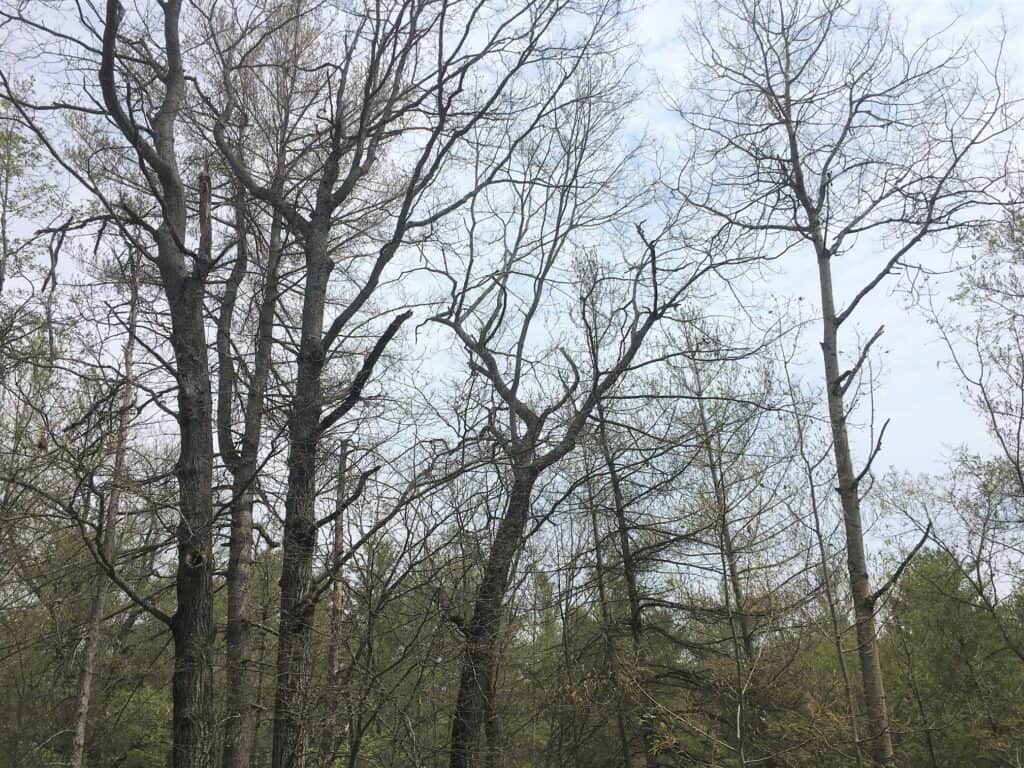
As much as a denuded forest is troubling to see, the ground beneath the trees is almost equally shocking. Areas where caterpillars are feeding become covered in frass – caterpillar poop. On Kasshabog Lake, one cottager reports that the frass, along with leaf and needle fragments, is up to an inch deep and covers his outdoor furniture, boat, and porch. Jane Zednick of Campbellcroft says that “When you are standing under infested trees, it can sound like rain. Then you realize it’s the sound of their frass hitting the ground.”
Local moth expert, Tim Dyson, has been watching the situation closely. “Two spots along Northey’s Bay Road on the north shore of Stony Lake have so much damage that it throws you right back in time to what the hardwood forest would normally look like in the first week of May. You see a slightly greenish hue, over an otherwise bare canopy. The little green you see is the remains of leaf material along the main veins of the leaves. It’s very eerie. All the while, the outside temperature in the shade is a sweltering 33C!”
If you’re driving north on Highway 28, watch for a large expanse of oaks just south of Burleigh Falls, which is practically leafless. The infestation is not everywhere, however. On Looncall Lake, for example, the north shore is devastated while 100 metres away on the south shore the trees are untouched.
Life cycle
Gypsy moths are native to Europe. They were accidentally introduced into the forests of Massachusetts in 1869 when a French naturalist tried to cross them with native silkworms to create a silk industry. Some of the insects escaped, and the rest is history.
The life cycle of the gypsy moth has four stages. Life begins as eggs, which are laid in summer on tree bark or most any other surface the females can find. The eggs are packed into conspicuous, three-centimetre-long masses, covered in buff-coloured hairs. One female can lay an astounding 500 to 1,000 eggs. Tiny, black caterpillars emerge the following May and search out fresh leaves. A single caterpillar can eat up a square metre of foliage. When present in sufficient numbers, an entire tree can be stripped in a day. The caterpillars grow to about eight centimetres in length and acquire long, black bristles and rows of blue and red spots along the back. Young caterpillars literally sail off to new locations by crawling to the tops of trees and spinning a silken thread which, when caught by the wind, carries the ravenous traveller to a new tree to plunder.
Photos by Drew Monkman (egg-laying, adults) and Tim Dyson (caterpillar, pupa)
Feeding ends in early July when the larvae enter the pupal stage of development. The pupae are dark brown, five-centimetre-long, shell-like cases with scattered yellow hairs. They are attached to a surface with flimsy, fine threads. Watch for them on branches, in bark crevices, and even on firewood. This is another reason not to move firewood to a new location. About two weeks later, an adult moths emerges from the pupal case. Females are white, about four centimetres in length, and have dark zigzag marks on the wings. They are unable to fly. Male moths look like a different species altogether. They are much smaller, mottled gray-brown in colour, and have feathery antennae. Males, too, show dark zigzag markings. It’s common to see large numbers of males flying about in late afternoon in search of females.
Impacts
Broad-leaf trees can usually survive at least one defoliation by gypsy moths. There is concern, however, for conifers like white pines, which are not nearly as resistant. “I’m not sure the conifers will come back,” says Dyson. “They store a high percentage of their energy in their needles. To be defoliated to such an extent and then hit by an almost certain drought leaves me short on faith that many will survive this.”
Trees aren’t the only species to be impacted. With so much of the forest now devoid of leaves, sight-dependent aerial predators have much easier access to prey. Young birds of forest-nesting species will likely perish as the nests are fully exposed to the stinging sun. The greater sun penetration combined with the extreme heat we’re experiencing has also created tinder-dry conditions. People need to use extreme caution to prevent fires, and local municipalities should consider putting fire bans in place.
Control
Unlike our native forest tent caterpillars, gypsy moths have few predators. One of the only natural controls comes in the form of a virus called baculovirus. The effect it has on the caterpillars could be described as “liquefication”. Infected caterpillars climb high into the trees and remain there to die. The exoskeleton disintegrates and the insides of the caterpillars – infected with the virus – rain down on the leaves below, eventually infecting other caterpillars.
If you are dealing with gypsy moths, avoid using pesticides. These chemicals are often highly toxic. Although a bacterial spray called Bacillus thuringiensis kurstaki (BTK) is sometimes recommended, there are potential impacts to human health and to the local ecology. BTK kills moths and butterflies of all species, including monarchs, as well as other insects. It must be applied in June when the caterpillars are feeding.
Ed Paleczny, chairman of the Environment Council for Clear, Stony and White Lakes, recommends extreme caution. “We need to recognize and respect the fact that trees are part of a delicate ecosystem. When it comes to the aerial spraying of BTK, the risks are high, the efficacy is questionable, and the impacts have been poorly investigated.”
Where infestations are small, a good natural remedy is to mix equal parts water, soap, and vegetable oil and apply with a spray bottle. You can also blast the caterpillars off the leaves with a hose, and then collect them when they try to climb back up the tree. Another solution is to wrap burlap around tree trunks to make a trap. Some of the caterpillars will crawl down from the canopy during the day and hide in the material. You can then drop the burlap in a pail of soapy water. To minimize the extent of the probable infestation to come next year, consider scraping the egg masses into a bucket and destroying.
Looking at the larger picture, it’s no exaggeration to say that our forests are under siege. They are facing climate change-related heat stress, drought, and an increased number of ice and windstorms; competition from invasive plant species like European buckthorn and dog strangling vine; and a host of fungal diseases, which are wiping out species like butternut and American beech. Emerald ash borers, too, are killing untold numbers of ash trees. Other diseases like oak wilt and hemlock woolly adelgid are also on the march northward.
Scientists are predicting that by mid-century, the Kawarthas will no longer have the temperature and precipitation regime for the kind of forest we have now. The climate that is necessary for species like sugar maple and white pine will have moved into northern Ontario. If predictions come true, the new climate of the Kawarthas will resemble that of southern Pennsylvania in only a few decades.
CLIMATE CRISIS NEWS
ALARM: If the 14-day weather forecast for Peterborough proves accurate, we will have had 24 days of temperatures above 30 C by July 20 – and still eight weeks of summer to go. Just two years ago, the temperature soared above 30 C on 28 days, based on data from Peterborough Trent U station. (See https://bit.ly/2W0SpFn ) However, keep in mind that in the 1990s, an average year saw only 6.3 days above this threshold. Climatic projections for Peterborough predict an average 23.3 days above 30 C by the 2030s. Statistics like these need to be part of local TV and radio weather reports, because most people have no idea how fast the Kawarthas are warming.
ENCOURAGEMENT: We may be approaching a tipping point in the transition off fossil fuels. Two mammoth fossil fuel companies declared in the last two weeks that they will downgrade the value of their own assets by as much as US$39.5 billion. Royal Dutch Shell said it would slash the value of its oil and gas assets by up to $22 billion amid a crash in oil prices. In late June, British Petroleum also declared “stranded assets”. A stranded asset is something — a resource, for example — that once had value or produced income but no longer does, usually due to some kind of external change. BP said it would reduce the value of its assets by up to $17.5 billion. Both companies said the accounting moves were a response to both the coronavirus-driven recession and global efforts to tackle climate change.
For local climate news and ways to take action, visit https://forourgrandchildren.ca/ and subscribe to the newsletter.
